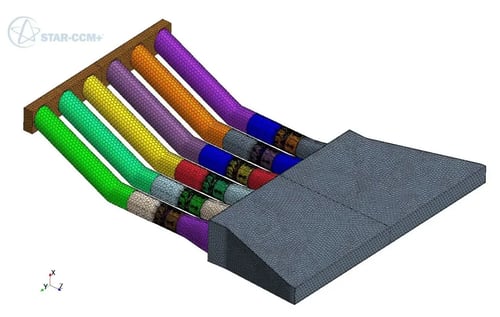Analysis Of Multiple Hydro Turbines In A Parallel Array
Several ultra-low head hydro turbines were modeled and analyzed for interactive effects by MSI engineering consultants
Interest is increasing in the abundance of low head and ultra-low head hydropower opportunities. Given the limited power available from a single turbine in these circumstances, MSI's fluid dynamics engineers were asked to model and analyze the performance of several hydro turbines operating in parallel.
MSI fluid dynamics engineers created an extensive CFD model to determine interactions between several low head hydro turbines running in parallel
A complete computational fluid dynamics (CFD) model of over 19 million vertices was created to accurately determine if there was any interaction between the hydro turbines. MSI’s intensive computing resources were able to successfully run this substantial model and provide engineers with reliable results.
The CFD model indicated significant power output variation among the low head hydro turbines due to interaction
Using the model, MSI's fluid dynamics consultants were able to determine a variation of over 5% in power output turbine-to-turbine, and a 10% spread in turbine efficiency, with potential for optimization with tailrace modifications.
REAL-WORLD EXAMPLES AND CASE STUDIES
MSI In Action
Case Study
Rerate of a Francis Hydro Turbine
MSI was tasked with optimizing a 1920s Francis style hydro-turbine runner.
Case Study
Reconciling Predicted Results to Test Stand
Test stand data vs. predicted performance.
Case Study
Analysis of Multiple Hydro Turbines in a Parallel Array
Modeling and analysis of parallel hydro turbines.

